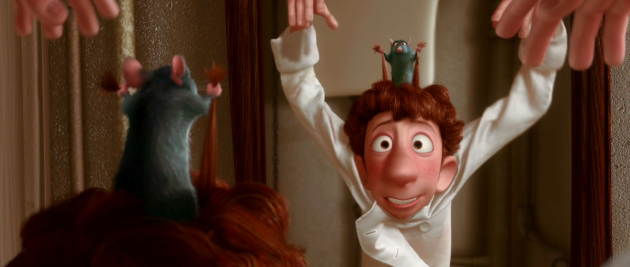I love Pixar. I love the ingenuity of their stories from Toy Story to Finding Nemo and Wall-E to Brave. I love the vividness of the worlds they create through animation. And I sure do love Co-Founder and President Ed Catmull’s book on maintaining and inspiring a creative culture at Pixar because it has wide-reaching implications for all organizations.
When Creativity, Inc.: Overcoming the Unseen Forces That Stand in the Way of True Inspiration came out this spring I expected to learn about the trials and tribulations about Pixar’s growth as the most successful animation studio in recent history. I didn’t expect Catmull’s central message: We’re still figuring it out, and this book is not the silver bullet to successfully running a creative organization.
Catmull acknowledges, not in a humblebrag way, that managing creative enterprises is hard work – and necessary. I’ll add to that: dynamic operations are and will be necessary to nurture creativity in our workplaces, homes and gathering places if our species is going to survive the gigantic hurdles we will face in just the next 50 years.
For me, Catmull’s observations on how to foster creativity were a balm against the corrosive effects of instant gratification and routine. The illustrative stories he shares and specific examples of what did and did not work at Pixar are a reminder that humans are often at our finest when we have to wrestle with big problems, finite resources, and solutions that don’t yet exist.
He notes that the development of the best ideas takes a long time, every time, because it’s necessary to try different approaches in order to find what works best.
“Hold lightly to goals and firmly to intentions,” when trying to manage a creative process, Catmull suggests, because the goals will likely have to change as the situation changes. He goes on to say, “We are willing to adjust our goals as we learn, striving to get it right – not necessarily to get it right the first time.”
Some of my favorites lines from Creativity, Inc.:
- “Trusting others doesn’t mean that they won’t make mistakes. It means that if they do (or if you do), you trust they will act to help solve it.”
- “Once you’ve hit on something that works, don’t expect it to work again,” because it’s human nature to game the system – consciously or not.
- Protecting nascent ideas is not the same as isolating them from critical feedback. To be a good manager of creative enterprises, Catmull says, you have to “protect your employees from themselves. Because if history is any guide, some are diligently trying to polish a brick.”
So for all of us in New Jersey (and beyond!), what are the ways in which we can take creativity in our organizations to the next level? What can we do to change our spaces, our policies, our language? What practices can we put in place to foster communication, regular, supportive feedback, and incorporate and encourage failure? Please share your thoughts in the comments section!
I’ll leave off with Catmull’s closing words:
“Unleashing creativity requires that we loosen the controls, accept risk, trust our colleagues, work to clear the path for them, and pay attention to anything that creates fear. Doing all these things won’t necessarily make the job of managing a creative culture easier. But ease isn’t the goal; excellence is.”
For those who want an extra dash of inspirational viewing and listening, check out the following:
- Ed Catmull’s NPR Marketplace interview
- Toy Story Filmmaker Andrew Stanton’s TED Talk: The clues to a great story
- Pixar: The math behind the movies – Tony DeRose (TED Ed Talk)
Kacy O’Brien is the Program Manager at Creative New Jersey. Check out Creative New Jersey’s new website at www.creativenj.org. Creative New Jersey is dedicated to fostering creativity, innovation, and sustainability by empowering cross-sector partnerships in commerce, education, philanthropy, government, and culture in order to ensure dynamic communities and a thriving economy. Creative New Jersey’s leaders and partners are regular contributors to the Dodge blog.
*Above image courtesy of Disney Pixar/Wikimedia Commons : Screenshot from “Ratatouille” trailer depicting Remy controlling Linguini.

